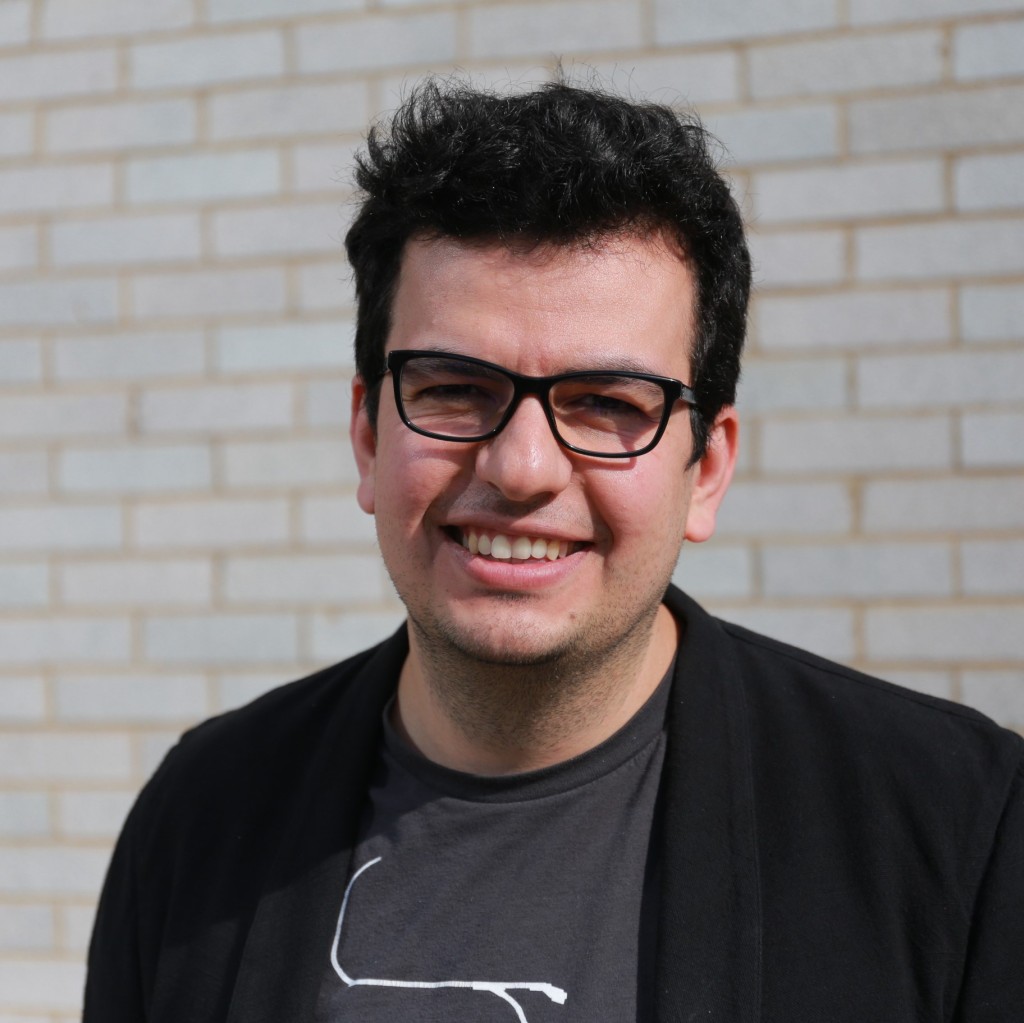
Luke Leung |SOM
Luke Leung is the Director of the Sustainable Engineering Studio for Skidmore, Owings and Merrill LLP. As a LEED AP with BD+C focus, his work includes over 40 plus LEED buildings either certified, or, in different stages of the LEED process. Mr. Leung’s work also includes 3 of the current top 20 tallest buildings in the world, Nanjing Greenland Tower, Burj Khalifa and Jin Mao. His work ranges, from the low-rise LG Art Hall, one of the first displacement performing arts centers in the world, to the Burj Khalifa, the world’s tallest man-made structure with a first-of-its-kind stack-effect control system. Selected projects also include the Long Center for Performing Arts in Austin, Beijing Finance Street, Embassy of Ottawa, McCormick Place West Convention Center, and a confidential geothermal project involving 2,400 acres and a LEED Platinum building with the first large-scale horizontal wind turbine in the city of Chicago
Topic: Design Informed by Performance
Intellectual ideas quantifiable by performance impact the form and detail of design. In this discussion, we will use both building and district scale to observe how forms can be created through performance. Selected examples will include different height projects in hot and humid climates, including district scale studies

Heath May |HKS LINE
Heath May AIA is Principal and Director of HKS Laboratory for INtensive Exploration.He leads a design team responsible for projects awarded local and state AIA design awards, including future:GSA, a net-zero renovation solution and 2012 WAN Commercial Building of the Year, and Sustainable Urban Living, a winner of the 2010 Chicago Athenaeum Green Good Design Award. An avid interest in passive solar design drives his research in analysis and implementation of data-driven parameters for optimization of complex facades for daylighting and solar performance.In April of 2013, he was named recipient of Building Design + Construction’s 40 under 40. Heath currently teaches an advanced graduate designstudio as an Adjunct Assistant Professor at University of Texas Arlington, CAPPA, School ofArchitecture.
Topic: Traveling Without Moving
The BDC industry is responding to the challenges of a rapidly changing climate, but are we really moving the needle?Other industries exhibit increased nimbleness, and faster advancement in both assimilating technology and driving r+d.How can we leverage computation, technology and progressive design methodologies to confront the challenges posed in this century and beyond?This short presentation will offer an overview of global issues affecting and affected by architecture, with an emphasis on investment in technology to assist in contemporary practice.

Jared Gunlock & | G2LD
Jared earned a double Bachelor in Architecture and History from the University of Houston. Even before graduating, however, he fell in love with lighting design and quickly moved into a design and project management role. His experience ranges from residential to community parks to commercial high rises and theatrical lighting. He’s currently the President of the Houston Chapter of the Illuminating Engineering Society and an associate member of the International Association of Lighting Designers.

Angela Palmer | Gensler
Angela is a Design Technology Specialist at Gensler Houston. She graduated from the University Of Houston College Of Architecture in 2012 and practiced architecture and design for the following 7 years. Her passion for design, technology & learning drives her in everything she does and motivated her to move into a technologist role at Gensler. She is a lead ambassador for digital technologies including VR, computational design, fabrication and Revit. With this position, she supports teams in need and also teaches and encourages those in her office to implement smarter strategies on projects.
Topic: Virtual Reality and Lighting Simulation as Design Information Tools for the New Gensler Office
As technology continues to evolve we are challenged with finding ways of incorporating these advances into professional practice. This presentation will explore how the architecture and design firm Gensler, along with the lighting design firm G2LD, used virtual reality and lighting simulations throughout the project process for the new Gensler office in downtown Houston. Using these technologies allowed the design team and consultants to better visualize and understand the complex architecture in order to create a more successful design. Actualizing this use case identified the current limitations of adopting new technology into real world projects while also opening doors to the future ideas and innovations yet to come.

Erik Olsen | Transsolar KlimaEngineering
Erik is a managing partner at Transsolar KlimaEngineering, an international climate engineering firm determined to create exceptional, highly comfortable indoor and outdoor spaces with a positive environmental impact. He leads the New York office in working collaboratively with architects worldwide to develop and validate low-energy, architecturally integrated climate and energy concepts. The result is celebrated projects around the world that simultaneously enhance human comfort and minimize resource use.Passionate and highly-skilled, Erik is a firm believer in innovation adding value to the human experience wherever possible. Erik has been a lecturer and guest critic at universities including Harvard University, MIT, University of Pennsylvania, and Columbia University. In addition to his specialist work at Transsolar, he has worked as a consulting mechanical engineer on a wide variety of building types and launched and directed the City of Chicago’s Green Permit Program. Erik is a graduate of the Massachusetts Institute of Technology and Purdue University .
Topic: Ideas Are Not Black and White: Attitudes for successful climate-responsive design
Erik will use focused case studies from Transsolar’s portfolio to illustrate fundamental attitudes toward collaboration that are critical to successful climate-responsive design. He will show how these attitudes influence diverse design outcomes with building performance simulation an integral part of a broader collaborative process,ultimately leading to progressive, climate-responsive projects

Kevin Giuseppetti | Kirksey
Kevin joined Kirksey as a Design Team member in 2013 with primary focus on architectural design. He uses parametric modelling and computational design as tools to find innovative solutions to design problems.
Topic: Occupancy Modeling
This is a study of occupant movement through spaces using grasshopper simulation. Occupancy is reflected as a static number in building design calculations. Generalization of occupancy usage often leads to uncomfortable or underutilized spaces. By adding the factor of time, we studied ways to tailor spaces to changing occupancy needs.

Eric Granhuag | NORESCO
Eric Granhaug is the lead engineer of NORESCO’s Texas Sustainability office. Eric is a registered professional engineer and brings over 10 years of installation and commissioning experience from both the industrial and commercial construction industries to NORESCO, one of the largest energy services companies in the U.S. Eric has worked on getting LEED accreditation to more than 500,000 sq ft of space in the Houston area. Through services such as energy savings performance contracts, energy audits, commissioning and retro-commissioning, energy & daylight modeling, green building certification consulting and sustainability master-planning, NORESCO has worked on more than 500 LEED projects and has guaranteed more than $3 billion in energy savings at more than 7,000 sites worldwide. Eric is a graduate from Texas A&M University with a degree in Mechanical Engineering, has CxA certification from the University of Wisconsin and is a certified HVAC technician.
Topic: Energy Modeling: Expectation vs. Reality
A look at where the rubber meets the road. How are energy efficiency systems actually being installed and what is this costing the owners? Reviewing lessons learned and actual field observations will give attendees a better understanding of how the construction process can make a building fall short of its energy efficiency goals and how to stop it. Attendees will gain an understanding of how to build a better energy model for existing buildings and how mistakes made during the construction process can affect outcome-based energy modeling programs.

Emir Pekdemir | BuroHappold Engineering
Emir leads the Computational Analysis team at BuroHappold Engineering in New York, providing integrated design solutions for healthier and better performing buildings using analytics. Using advanced building performance simulation as a design tool, Emir has successfully completed projects with intricate façades and complex passive & mechanical systems. With a wide range of skills including dynamic energy and airflow modeling, hygrothermal modeling, daylight & glare simulations, and computational fluid dynamics (CFD), Emir is also an active speaker/presenter in the world of building simulation.

Daniel Bersohn | BuroHappold Engineering
Daniel is a thought leader on the MEP team at BuroHappold Engineering in New York. He sits on the New York City Mechanical Code Committee and New York City Energy Code Advisory Committee. With extensive experience both designing and building complex projects and an education in both mechanical engineering and architecture, he is a resource for solving challenging problems, interpreting applicable codes and regulations, resolving or avoiding constructability issues, and has an instinct for maintaining multidisciplinary situational awareness.
Topic: Engineering Instinct and Analytics: An Unfinished Journey in Climate Zone 2B
The true power of building performance analysis is influencing design. For a lab building in climate zone 2B, our analytics team has been tinkering with the architectural and mechanical design features and informing the decision making at different scales from building massing to space programming, shading design, mechanical system design & operation and even positioning of radiant ceiling panels for occupant comfort. Emir Pekdemir who heads the analytics team in BuroHappold Engineering New York office will walk you through an unfinished journey of cutting-edge analysis that pushes the current state of the art software to their limits and merging their strengths to deliver data driven design.
The complexity of simulation must also be backed up by an instinct and experience for opportunities and relationships between different design choices. It’s important to know what impact design choices are more likely than not to have on simulation results. Daniel Bersohn who directed the mechanical design of the project from inception through design development will explain the process for identifying and reacting to key drivers, opportunities, synergies and challenges even before building massing was established.
Overall, the attendees will be introduced to multi-disciplinary approach to high performance building design and the conversation will cover preliminary energy analysis, solar radiation studies, daylight studies, computational fluid dynamics, interior & exterior thermal comfort and advanced energy modeling of mechanical systems.

Amreen Shajahan | Texas A&M University
…
Topic: Effects of indoor environmental parameters related to building HVAC system on patients’ medical outcome: A review of scientific research on hospital buildings
This presentation aims to identify how indoor environmental parameters related to HVAC system are impacting patients’ medical outcome. This will help healthcare providers, practitioners, and built environment professionals to understand the importance of indoor environmental parameters and HVAC systems to attain patients’ positive medical outcome.

Weihuan Zhao | University of North Texas
…